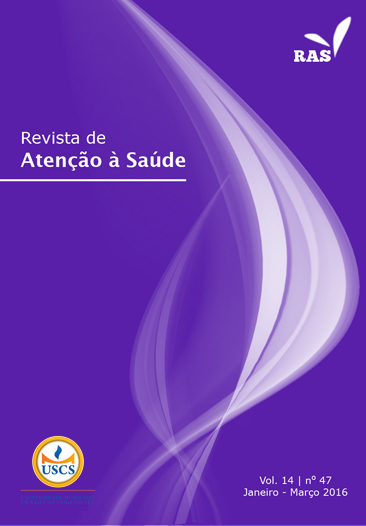Clinical profile, adherence, and therapy satisfaction of patients in use of oral anticoagulants
DOI:
https://doi.org/10.13037/ras.vol14n47.3389Keywords:
Cardiovascular diseases, Anticoagulants, CardiologyAbstract
Introduction: Oral anticoagulation (OAC) is commonly used in the treatment of cardiovascular diseases.Non-adherence to treatment is believed to be one of the major issues relating to therapeutic failure, increasingthe rates of morbidity and mortality. Objectives: To describe the clinical profile, adhesion levels, and therapeuticsatisfaction of valvulopathy patients using oral anticoagulants. Methods: Cross-sectional, quantitative,and descriptive study conducted in the Oral Anticoagulation Outpatient Service of the Federal University ofUberlândia. After the consent of the participants, clinical interviews were conducted and the tools of assessment of treatment adherence (MAT) and satisfaction with anticoagulant therapy (DASS) were implemented.The study was approved by the local ethics committee – 82152/2012. Descriptive statistics and correlationanalysis were performed. Results: A total of 39 patients participated in the study, of which 59% were male.Regarding MAT, 74.36% of patients proved to be adherent to treatment (MAT), and the average therapeuticsatisfaction was 110.67 points (DASS). The main indication for the use of OAC was atrial fibrillation (38.46%)and warfarin was the OAC of choice (84.61%). The MAT was related to the limited area of the DASS (r=-0.2583; p=0.0556), as well as the overload (r=-0.5398, p=0.0004) and positive psychological aspects (r=0.3641,p=0.0124). The MAT relative to the total DASS showed a negative and weak but significant correlation (r=-0.3543, p=0.0145). Conclusion: It is required to pay attention to non-adherent individuals in order to increasethe quality of life related to health and reduce complications regarding therapy.Downloads
Downloads
Published
2016-02-16
Issue
Section
ARTIGOS ORIGINAIS
License
Policy Proposal for Journals offering Free Delayed Access
Authors who publish in this magazine agree to the following terms:
- Authors maintain the copyright and grant the journal the right to the first publication, with the work simultaneously licensed under a Creative Commons Attribution License after publication, allowing the sharing of the work with recognition of the authorship of the work and initial publication in this journal.
- Authors are authorized to assume additional contracts separately, for non-exclusive distribution of the version of the work published in this magazine (eg, publishing in institutional repository or as a book chapter), with the acknowledgment of the authorship and initial publication in this journal.
- Authors are allowed and encouraged to publish and distribute their work online (eg in institutional repositories or on their personal page) at any point before or during the editorial process, as this can generate productive changes, as well as increase impact and citation of the published work (See The Effect of Open Access).









